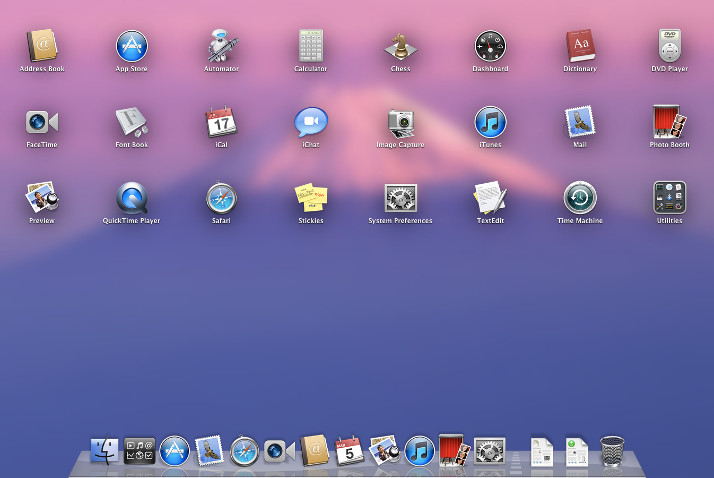Mac OS X 10.6 signals a shift at Apple as the company looks to the future of its operating system, and a clear example of that was the move to offer Rosetta as an optional install instead of. Historically, Rosetta was included within Mac OS X 10.4.4 Tiger, became a downloadable option in OS X 10.6 Snow Leopard, but disappeared the following year. (In that case, the transition was. Dec 04, 2020 Curiously, Rosetta 2 is not installed by default on these Macs however, so if you wish to run these apps you’ll need to install Rosetta 2 onto the Apple Silicon Mac yourself. There are two ways to install Rosetta 2 onto an Apple Silicon Mac; using the Terminal, or by attempting to open a non-native x86 app which prompts an installer. Apple officially dropped Rosetta support in Mac OS X 10.7 (Lion) in 2011. The trademark could simply be ongoing protection of a long existing trademark for Apple, but given the recent rumors, the.
Mac Os 10.7 Rosetta Stone
Before embarking on a major OS upgrade, it would be wise, advisable and very prudent if you backup your current system to an external connected and Mac formatted Flash drive OR externally connected USB, Thunderbolt or FireWire 800, Mac formatted hard drive. Then, use either OS X Time Machine app to backup your entire system to the external drive OR purchase, install and use a data cloning app, like CarbonCopyCloner or SuperDuper, to make an exact and bootable copy (clone) of your entire Mac's internal hard drive. This step is really needed in case something goes wrong with the install of the new OS or you simply do not like the new OS, you have a very easy way/procedure to return your Mac to its former working state.
Then, determine if your Mac meets ALL minimum system install requirements.
To install Mavericks, you need one of these Macs:
iMac (Mid-2007 or later)
MacBook (13-inch Aluminum, Late 2008), (13-inch, Early 2009 or later)
MacBook Pro (13-inch, Mid-2009 or later),

MacBook Pro (15-inch or 17-inch, Mid/Late 2007 or later)
MacBook Air (Late 2008 or later)
Mac mini (Early 2009 or later)
Mac Pro (Early 2008 or later)
Xserve (Early 2009)

Your Mac also needs:
OS X Mountain Lion, Lion, or Snow Leopard v10.6.8 already installed
2 GB or more of memory (I strongly advise, at least, 4 GBs of RAM or more)
8 GB or more of available space
Next,
If you run any older Mac software from the earlier PowerPC Macs, then none of this software will work with the newer OS X versions (10.7 and onward). OS X Snow Leopard had a magical and invisible PowerPC emulation application, called Rosetta, that worked seamlessly in the background that still allowed older PowerPC coded software to still operate in a Intel CPU Mac.
The use of Rosetta ended with OS X Snow Leopard as the Rosetta application was licensed to Apple, from a software company called Transitive, which got bought out, I believe, by IBM and Appe could no longer secure their rights to continue to use Rosetta in later versions of OS X.
So, you would need to check to see if you have software on your Mac that maybe older than, say, 2006 or older.
Also, check for app compatibilty here.
If you have any commercial antivirus installed and/or hard drive cleaning apps installed on your Mac, like MacKeeper, CleanMyMac, TuneUpMyMac, MacCleanse, etc. now would be a good time to completely uninstall this apps by doing a Google search to learn how to properly uninstall these types of apps.
These types of apps will only cause your Mac issues later after the install of the new OS X version and you will have to completely uninstall these types of apps later.
Once you have determined all of this, you should be able to find the latest version of Mavericks by clicking on the Mac App Store icon in the OS X Dock and then login to the Mac App Store using your Apple ID and password.
You can then begin the download and installation process of installing OS X 10.9 Mavericks from the Mac App Store.
Mac Os 10.7 Rosetta Catalina
Mac Os X 10.6.8 Upgrade To 10.7
Good Luck!

macOS is the operating system used in Macintosh computers since their introduction in 1984. Some appliances (notably the iPhone and iPad) also run derivative versions of Mac OS, named iOS. The current version is macOS High Sierra (10.13), which is derived from NeXTSTEP, and has a Mach-based microkernel running a BSD compatibility layer. Most applications are written in Objective-C and Swift using the Cocoa framework.
:no_upscale()/cdn.vox-cdn.com/uploads/chorus_asset/file/20054647/Rosetta_2.png)
Versions of macOS from 10.0 to 10.11 were branded as Mac OS X, and the current release is still unofficially referred to as such. Previous versions were simply called Mac OS, while the oldest versions were referred to as System followed by the version number, e.g. 'System 7'.
Mac Os 10.7 Rosetta Version
'Mac' is a term which describes the broader class of Apple computer hardware and their Macintosh operating systems.
Pre-X versions of Mac OS (Mac OS 9 and lower) were written in-house at Apple and were based in part on the slightly earlier Lisa Office System. 'Classic' Mac OS is still in use on many older Macs, especially 68k Macs (Macs with a Motorola 680x0 processor), which are unable to run versions newer than 8.1. (In fact, many older Macs can't run OS 8 at all.) Depending on the specific model, PowerPC Macs support anywhere from System 7.1.2 up to OS X 10.5. (OS X 10.6 dropped support for PowerPC Macs, although an emulation layer called Rosetta was included through 10.6.8 to run PowerPC apps on Intel Macs.)
Mac Os X Lion Rosetta
